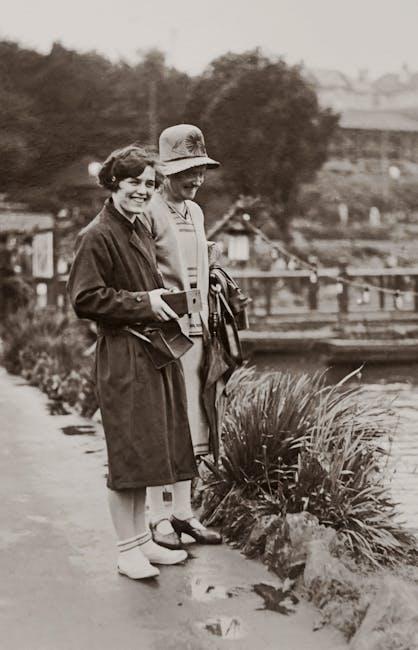Biographical films, or biopics, have long captivated audiences with their dramatized portrayals of historical and contemporary figures. However, as these films distill intricate lives into digestible narratives, a critical question arises: do they oversimplify the complex realities of their subjects? This article delves into the artistic liberties inherent in biopics, examining how the demands of storytelling can lead to reductive interpretations of multifaceted individuals. By analyzing notable examples and industry trends, we aim to uncover the delicate balance filmmakers must strike between factual accuracy and engaging cinema, and the implications this balance has on public perception and historical legacy.
Examining the Layers: Understanding the Nuances of Biographical Narratives
In the realm of biographical films, the task of distilling a person’s life into a few hours often results in a narrative that skims over the intricate layers of their existence. Biographical narratives are inherently complex, shaped by cultural, social, and personal dimensions that resist neat categorization. The art of storytelling in film demands choices, often leading to the omission or alteration of significant events and characteristics. This simplification can be seen as both a necessity for coherence and a potential misrepresentation of the subject’s true essence.
Key nuances often overlooked include:
- The influence of minor, yet pivotal, personal relationships.
- Contradictory aspects of the individual’s personality.
- The broader socio-political context shaping their actions.
By focusing on select milestones, films may neglect these subtleties, presenting a version of reality that prioritizes dramatic appeal over factual depth. This approach raises questions about authenticity and the ethical responsibilities of filmmakers in portraying historical figures.
Beyond the Surface: The Impact of Oversimplification on Audience Perception
When it comes to portraying real-life figures, biographical films often tread the delicate line between storytelling and factual accuracy. This balancing act can lead to oversimplification, which may significantly shape how audiences perceive these complex individuals. By condensing intricate life stories into a digestible narrative, filmmakers run the risk of reducing multifaceted personalities to mere caricatures.
- Reduction of Complexity: Real-life figures often have layered motivations and diverse experiences. Films, constrained by time, might focus on a single aspect, neglecting the nuances that make these figures truly unique.
- Emotional Manipulation: To create a compelling story, filmmakers may emphasize certain events over others, steering audience emotions and potentially skewing perception.
- Historical Accuracy vs. Entertainment: The drive to entertain can overshadow the commitment to accuracy, leading audiences to accept dramatized versions as truth.
This simplification can have profound implications, influencing public understanding and memory of these figures. By prioritizing narrative flow over factual intricacies, films may inadvertently shape a distorted legacy, leaving viewers with an incomplete picture of the person behind the legend.

Crafting Complexity: Techniques for Authentic Portrayals in Film
Biographical films often walk a tightrope between narrative clarity and the intricate layers of their subjects. While filmmakers aim to capture the essence of real-life figures, the medium’s constraints sometimes necessitate a streamlined portrayal. This can lead to a flattening of complex personalities, where multifaceted individuals are reduced to a series of dramatic moments or singular traits.
To achieve a more authentic portrayal, filmmakers can employ several techniques:
- Multiple Perspectives: Presenting a character through the eyes of various individuals can reveal different facets of their personality.
- Non-linear Storytelling: Shifting timelines can offer a deeper insight into the motivations and transformations of the subject.
- Incorporating Contradictions: Embracing the paradoxes within a character’s life highlights their human complexity.
By weaving these techniques into their narratives, filmmakers can craft more nuanced and faithful depictions, ensuring that the richness of real-life figures is not lost in translation.

Balancing Fact and Fiction: Strategies for Accurate Storytelling in Biopics
In the quest to create engaging narratives, filmmakers often face the challenge of weaving together fact and fiction. To maintain authenticity while ensuring entertainment value, biopics can adopt several strategies:
- Contextual Research: Deep dives into historical records and personal archives provide a foundation for accuracy. Filmmakers must collaborate with historians and experts to ensure a genuine portrayal of events.
- Character Complexity: Real-life figures are multidimensional. Highlighting their flaws alongside achievements adds depth, avoiding one-dimensional portrayals.
- Selective Focus: Concentrating on pivotal moments allows for detailed storytelling without overwhelming audiences with exhaustive life stories.
- Creative License with Integrity: While dramatization is inevitable, it should serve to enhance, not distort, the essence of the individual’s journey.
These strategies ensure that biographical films remain true to life while captivating viewers, offering a balanced perspective on complex personalities.

